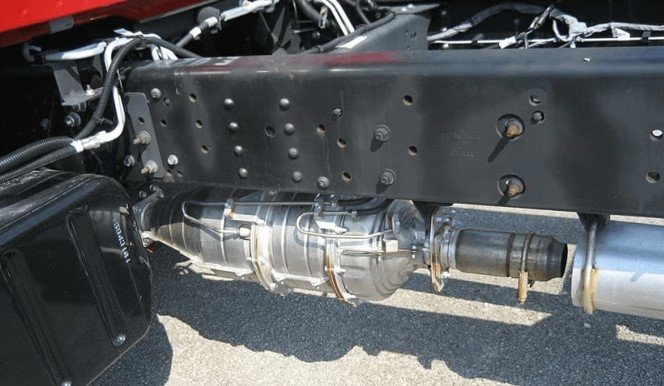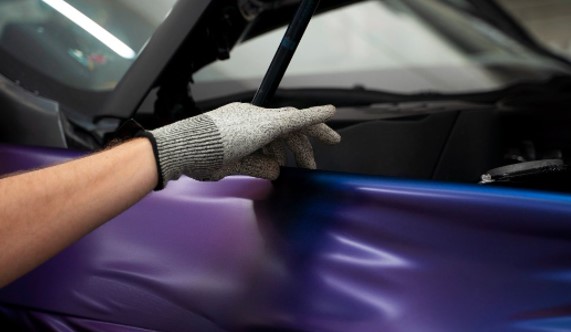Tire trouble: Potholes and worn tread can prove dangerous and costly
It’s that time of year, when potholes litter our roadways and, in many cases, hit our wallets hard. Americans spend billions of dollars every year to repair damages caused by potholes, with an average price tag of almost $600 per repair.
Drivers can do one important thing right now to minimize the risk of requiring a tow if they hit a pothole and tire damage disables the vehicle – check the trunk to make sure they have a useable spare.
“In 2022, there were almost 700 AAA members, just in South Dakota, whose tire troubles required a tow because they did not have a useable spare,” said Shawn Steward, spokesman for AAA South Dakota. “While drivers can’t always avoid a pothole, having a useable spare may help them avoid additional inconvenience and expense.”
While the desire for any call is always a quick fix at the roadside, AAA Emergency Rescue data indicates that last year, almost 30{12dec99aef6f119e349308ab81c83b123ba77cd3d9c980ff09eaac1f958a2724} of all tire-related calls in South Dakota resulted in the need for a tow – mostly because there was no useable spare. Had there been a spare available, hundreds of tows could have been avoided, saving drivers both time and money.
Is Your Tow and the Damage Caused by Potholes Covered by Insurance?
Maybe. Maybe not. Typically, a flat tire is not covered by insurance because it is considered basic wear and tear. But, a blowout caused by a pothole, the tow and additional damages to your vehicle may be covered…depending on your level of coverage.
“This is a costly lesson learned too late by many motorists,” said Gary Tomes, Regional Manager for the Insurance Agency at AAA. “Drivers who opt for minimum coverage may find themselves paying a steep price when it comes to potholes.”
A 2021 AAA survey found that 1 in 10 drivers sustained vehicle damage significant enough to warrant a repair after hitting a pothole. In addition to tires, damage caused by potholes may include dented rims, damaged wheels, dislodged wheel weights, displaced struts, dislocated shock absorbers, damaged exhaust systems, misaligned steering systems and ruptured ball joints.
AAA urges all vehicle owners to talk to their insurance advisors in advance of a pothole problem to ensure they are adequately covered, should the need arise.
Avoiding Potholes
Of course, the best way to prevent pothole damage or tire troubles that might require a tow is to avoid potholes altogether.
AAA South Dakota offers the following tips for avoiding potholes/minimizing damage:
-
Beware of Puddles – Puddles are often potholes in disguise.
-
Look Ahead – Make a point of scanning the road ahead for potholes. An alert driver is more likely to have time to avoid a pothole.
-
Increase Following Distance – This will give you additional time to avoid potholes otherwise hidden by the vehicle in front of you.
-
Limit Distractions – Avoiding a pothole is much easier if you are paying attention to the road ahead.
-
Slow Down – Slowing down will increase the chance of avoiding a pothole, and if a pothole cannot be avoided, reduced speed will likely mean reduced damage.
-
Inspect Tires – Make sure tires are properly inflated and have a healthy tread. Tires that are not road-ready are at greater risk of a blowout or flat.
-
Take Care of Your Spare – Check your trunk. Many newer cars do not have spare tires or the spare is unusable, causing greater inconvenience to drivers and their passengers in the event of a flat.
-
Don’t Ignore Noises/Vibrations – A hard pothole impact can dislodge wheel weights, damage the tire or wheel and even break suspension components. Any unusual noises after a pothole hit should be inspected immediately. Find the nearest AAA Approved Auto Repair facility here.
Tread Tribulations
As we head into President’s Day weekend, and with plenty of freezing, thawing and precipitation ahead, now is the time to let George Washington check your tires to minimize risk in wintry and wet weather.
Previous research from AAA reveals that driving on relatively worn tires at highway speeds in wet conditions can increase average stopping distances by a staggering 43{12dec99aef6f119e349308ab81c83b123ba77cd3d9c980ff09eaac1f958a2724}, or an additional 87 feet — more than the length of a semi-trailer truck — when compared to new tires. With nearly 800,000 crashes occurring on wet roads each year and Americans now holding on to their cars longer than ever before, this is cause for concern.
“Tires are what keep a car connected to the road,” said Shawn Steward, AAA South Dakota spokesman. “Even the most advanced safety systems rely on a tire’s basic ability to maintain traction to avoid a crash.”
AAA’s research indicated that not only do worn tires increase stopping distance, but they also reduce handling ability by about 30{12dec99aef6f119e349308ab81c83b123ba77cd3d9c980ff09eaac1f958a2724}.
AAA urges drivers to check tread depth and replace tires proactively.
-
Let George Washington Help – Here’s a test that’s tried and true. Slip an upside-down quarter between your tire grooves and look at Washington’s head – if you can see all of it, it’s time to start shopping for new tires.







